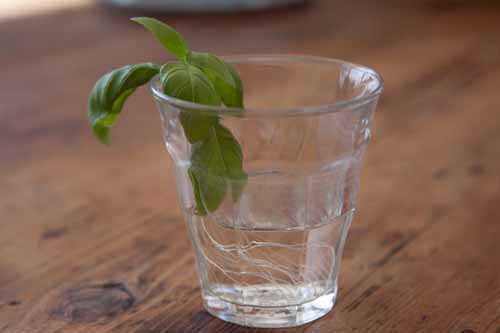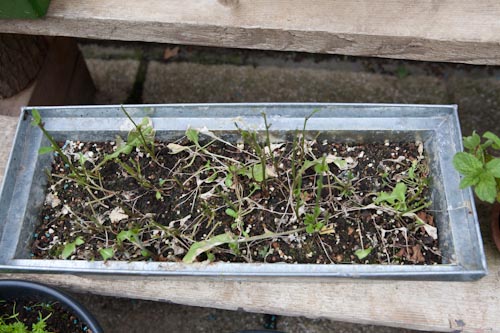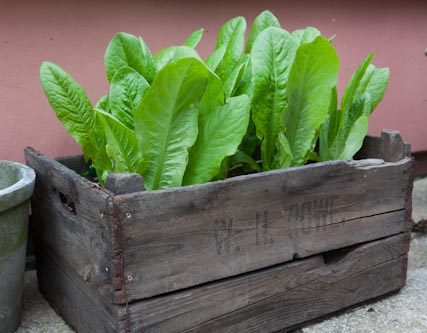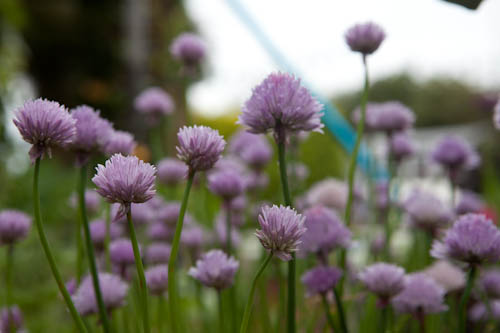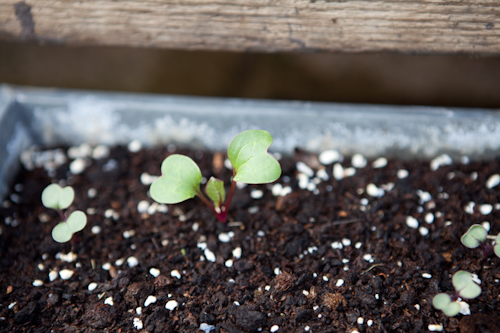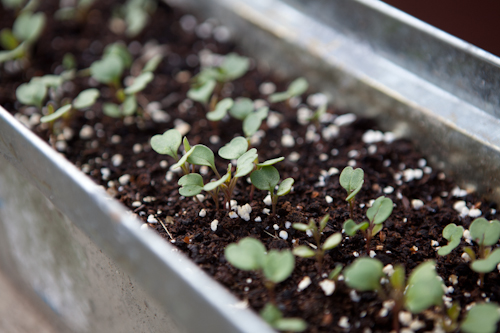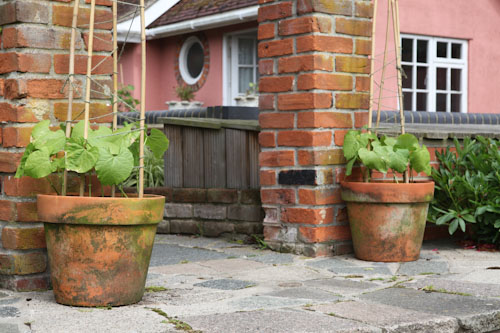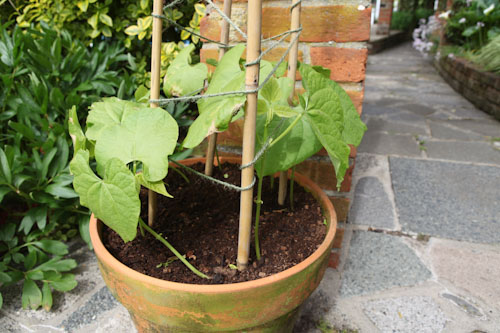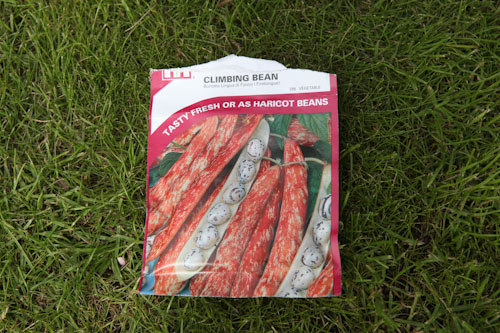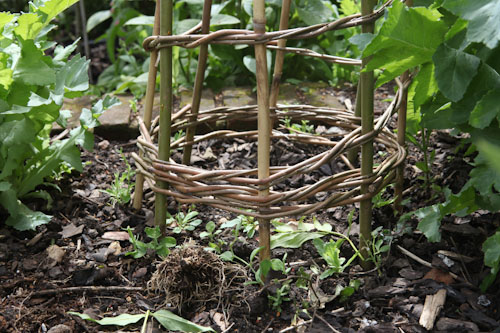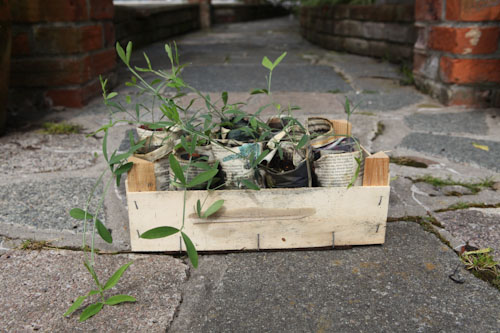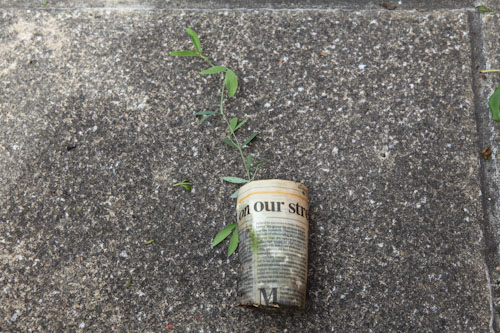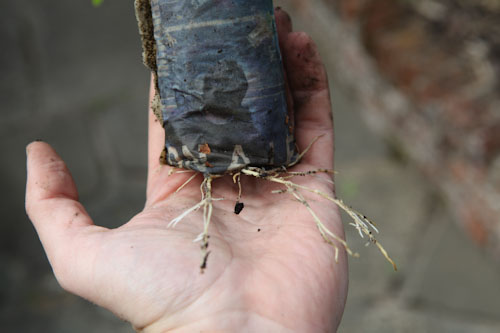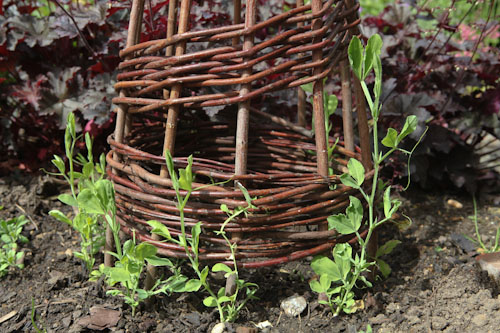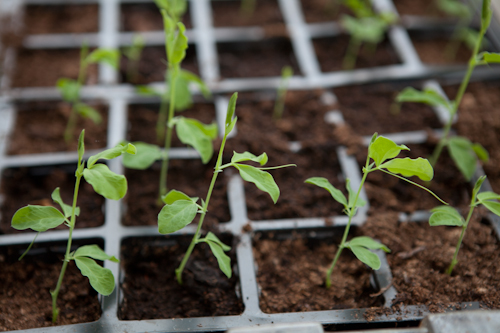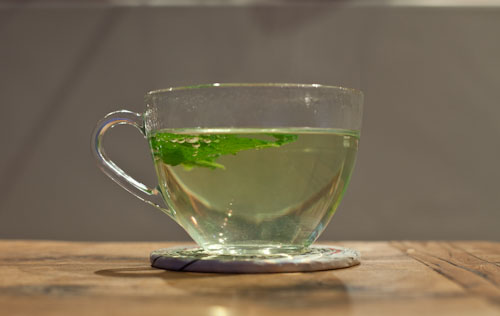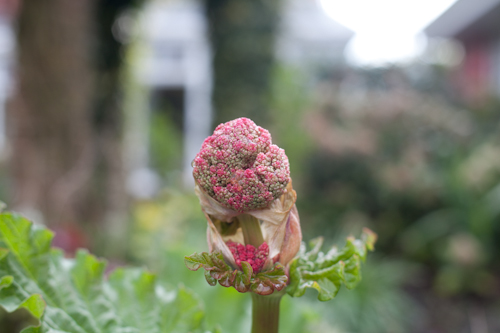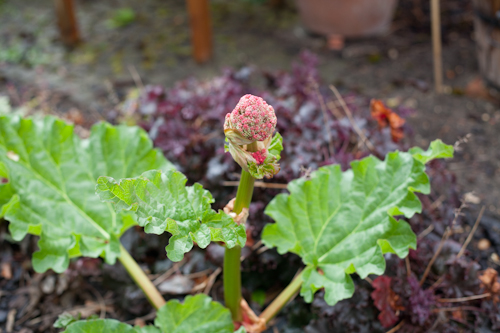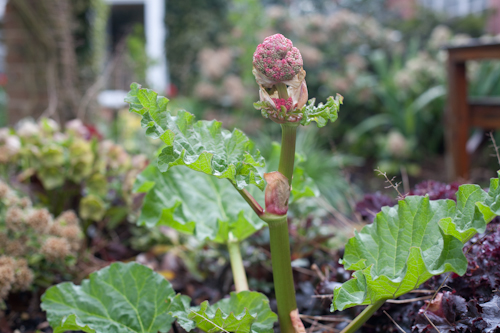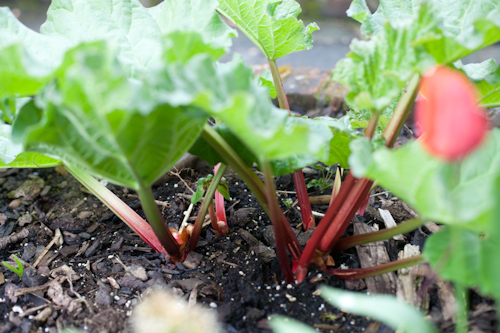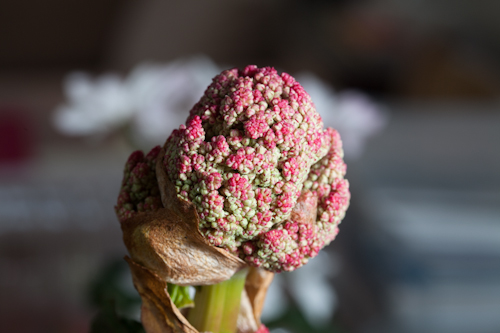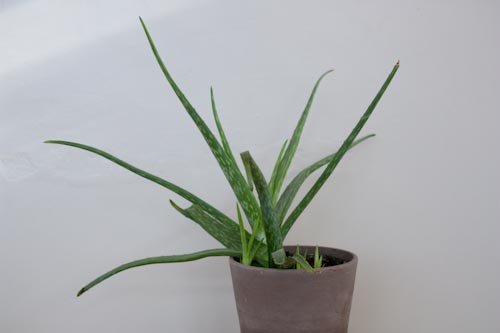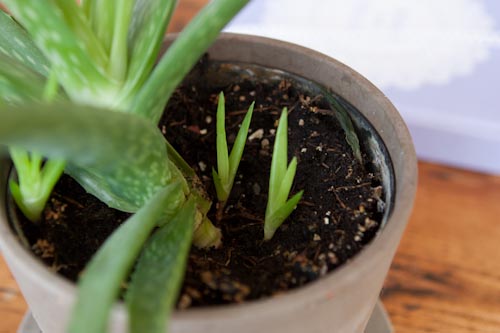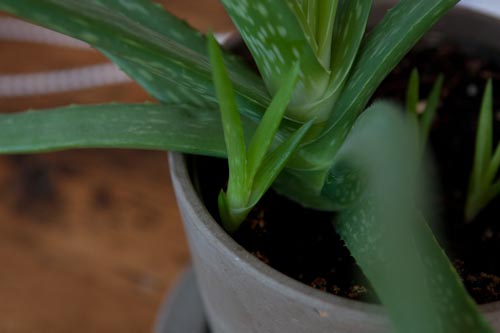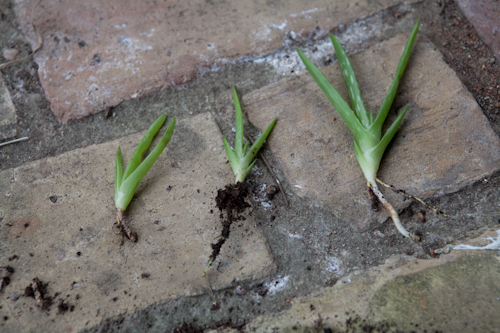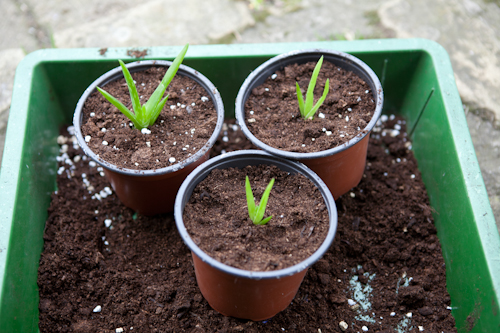After finally discovering the secrets of growing basil last year it is long overdue i started off some more basil plants. The only way to grow basil is on mass so you don’t feel guilty cutting back a whole plant to make a nice fresh pesto. After experimenting with growing from seeds I dind by far the quickest and easiest way is to start off with a supermarket bought basil plant.
I simply take about 15-20 cuttings from the original plant as soon as i get it home and pop them into small glasses of water. They’re left on a bright windowsill that doesn’t get too much direct sun. After 2-3 days this is what you get….
It always amazes me how quickly the roots grow from these basil cuttings. The above plant is only 5 days old! I’ve just potted up the cuttings into regular compost to grow on. I usually pinch out the tops after 2-3 weeks of further growth to help the plants bush out.
I’ve found the real secret to growing basil is to no let it have too much direct sunlight. In our kitchen we have a small dormer window that get plenty of light but not too much direct – only an hour or so in the morning. It seems to be the perfect place to grow basil. Hopefully it won’t be long before pesto is on the menu…
